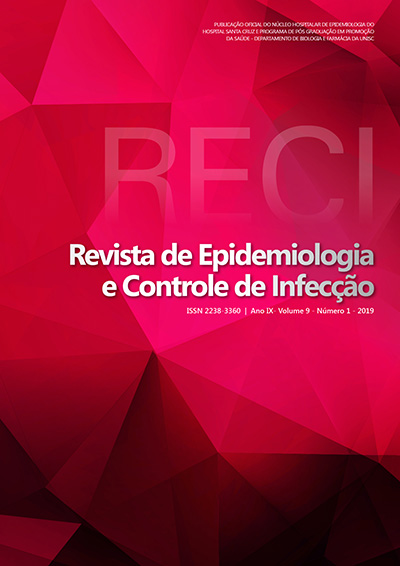Arthropods of medical importance and profile of associated accidents for the municipality of São Miguel do Oeste, Santa Catarina state
DOI:
https://doi.org/10.17058/reci.v9i1.12457Keywords:
Phoneutrism, loxoscelismo, scorpionism, lonomismo, public health.Abstract
Background and Objectives: Arthropods are by far the most common animals on Earth in total individuals and described taxa. In Brazil, the importance of accidents involving venomous animals, which include accidents with venomous arthropods, can be expressed by more than 100 thousand cases and about 200 recorded deaths per year. The public health services have increased the notifications of this type of accident in the states of the southern region of Brazil, mainly those occurred in the rural area. This increase is due to changes in the natural environment caused by deforestation and the different uses of the soil by man. The objective of this study was to describe the occurrence of accidents with venomous arthropods and the social profile of associated accidents in the municipality of São Miguel do Oeste, from 2007 to 2016. Methods: This is a cross-sectional and retrospective study, with data obtained from the notification forms and individual investigation of the Information System for Notifiable Diseases (Sinan). Results: The predominance of accidents involved men for lonomism and other venomous caterpillars and women for loxoscelism, accidents occurred more frequently in the urban environment and involved the age group between 20 and 59 years, affecting the economically active population. Conclusions: The study contributes to understand the determinants of the occurrence of venomous animals in a border area and provides a basis for public policies for health promotion and disease prevention. Keywords: Poisonous animals. Health promotion. Public health.Downloads
Downloads
Published
How to Cite
Issue
Section
License
The author must state that the paper is original (has not been published previously), not infringing any copyright or other ownership right involving third parties. Once the paper is submitted, the Journal reserves the right to make normative changes, such as spelling and grammar, in order to maintain the language standard, but respecting the author’s style. The published papers become ownership of RECI, considering that all the opinions expressed by the authors are their responsibility. Because we are an open access journal, we allow free use of articles in educational and scientific applications provided the source is cited under the Creative Commons CC-BY license.


